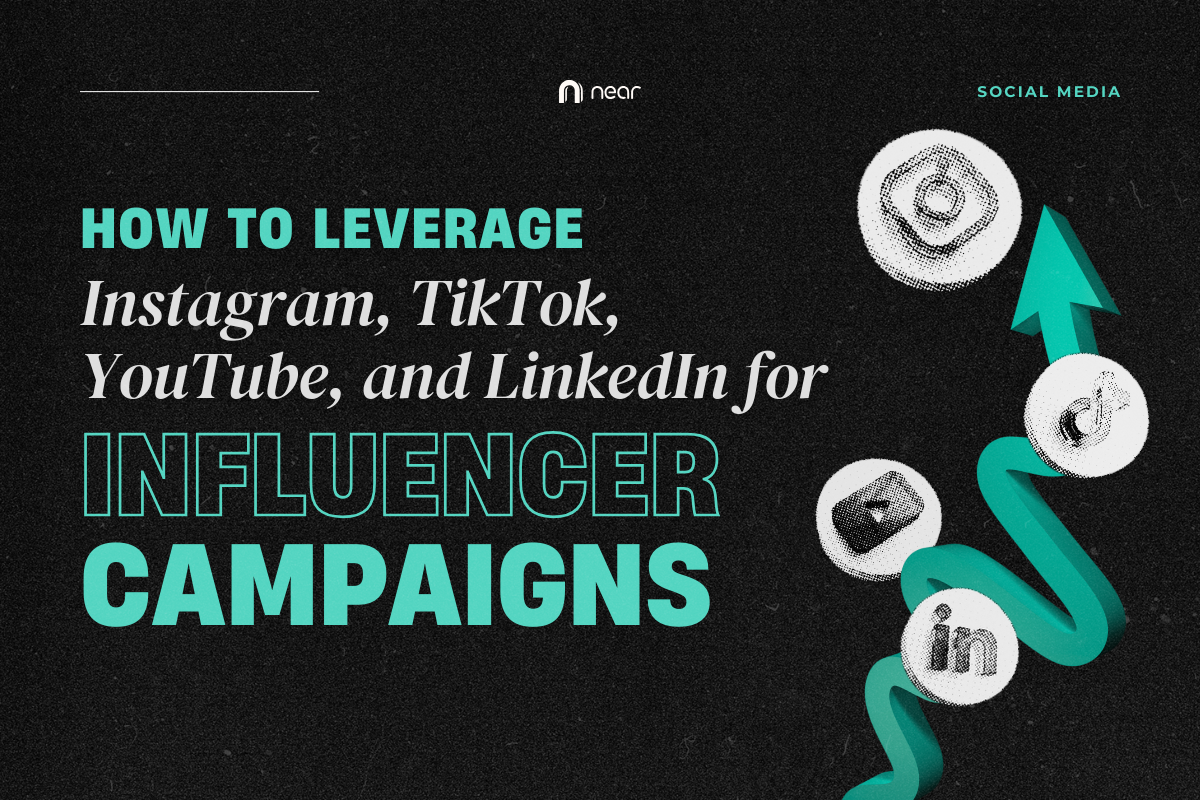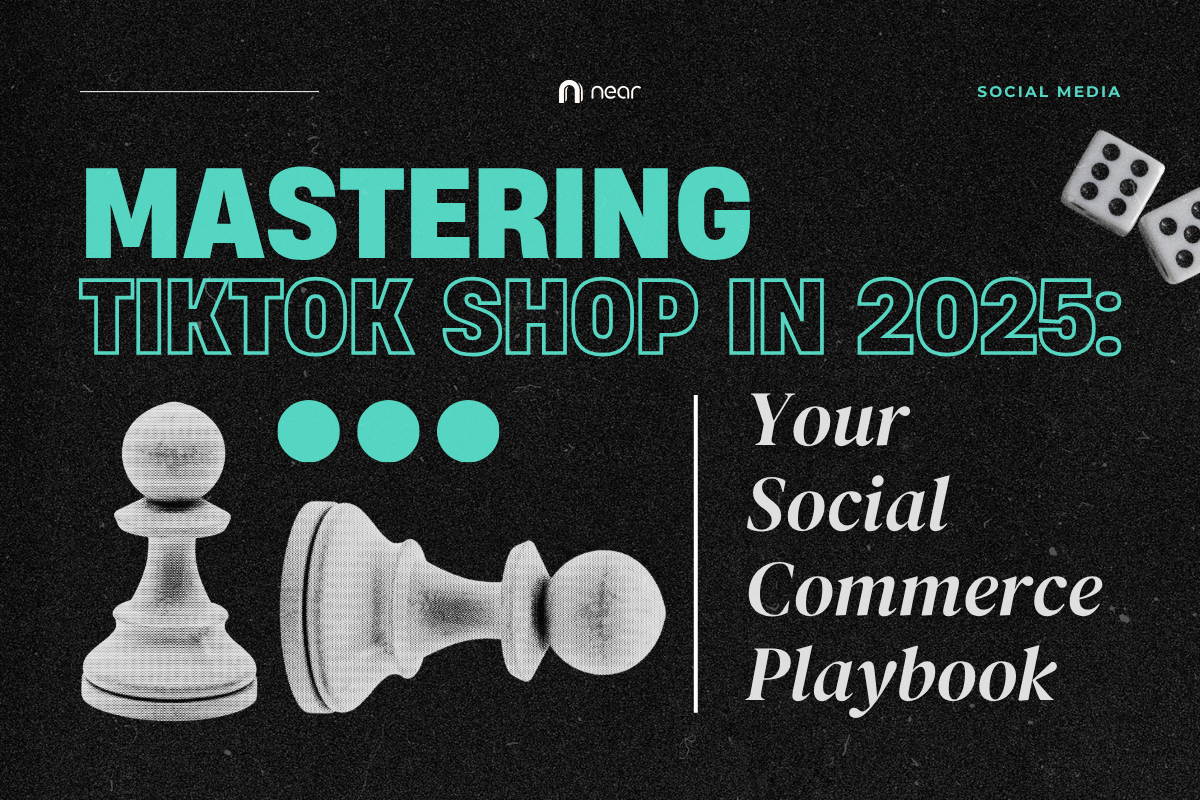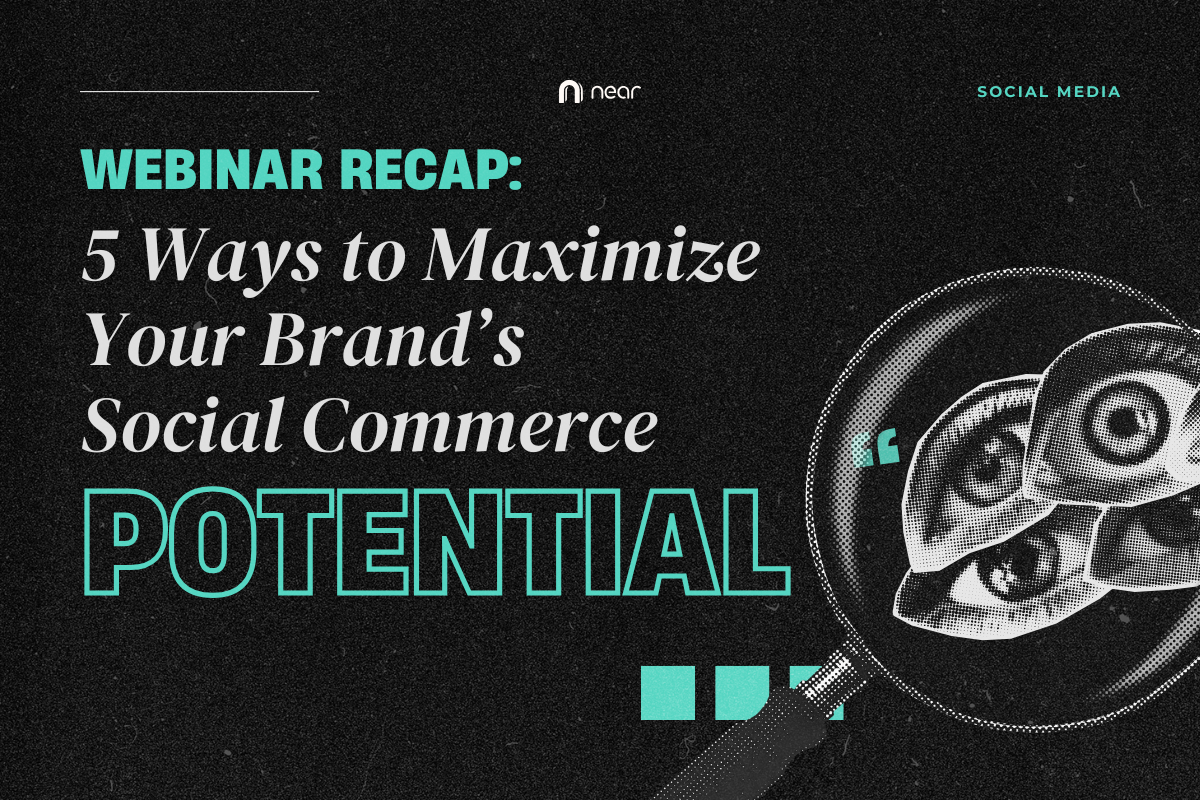View By Date
- December 2025 1
- November 2025 2
- October 2025 3
- September 2025 2
- August 2025 2
- July 2025 2
- June 2025 2
- May 2025 3
- April 2025 2
- March 2025 3
- February 2025 1
- January 2025 1
- November 2024 1
- September 2024 1
- July 2024 1
- May 2024 3
- April 2024 1
- March 2024 1
- February 2024 2
- January 2024 2
- August 2023 1
- July 2023 1
- June 2023 2
- May 2023 3
- April 2023 4
- January 2023 2
- November 2022 1
- September 2022 3
- June 2022 1
- December 2021 1
- November 2021 4
- October 2021 2
- September 2021 1
- January 2021 1
View By Category
How to Leverage Instagram, TikTok, YouTube, and LinkedIn for Influencer Campaigns
How to Leverage Instagram, TikTok, YouTube, and LinkedIn for Influencer Campaigns
When it comes to influencer marketing, one size doesn’t fit all, especially when you’re working across Instagram, TikTok, YouTube, and LinkedIn. Each platform has its own vibe, audience behaviour, and content format. For brand marketers, this means the key to campaign success isn’t just picking the right influencer, it’s knowing where they shine and how to play the game on that specific platform.
As we’ve seen in our Spotify case study, creators who are tapped for the right platform and right content format drive more authentic conversations and better ROI. That’s why, at Near, we always build with platform fluency in mind so KOLs aren’t just producing content; they’re showing up where and how it matters most.
Whether you're growing your brand’s social presence or executing your next influencer campaign, here’s your guide to maximizing every social media platform in 2025.
Instagram: Visual Storytelling That Converts
Best for: Lifestyle, beauty, fashion, and product-forward contentTop formats: Reels, Stories with swipe-ups, Grid posts, Carousels, Link-in-BioKey metrics: Engagement rate, Story completion rate, Saves, Clicks
Instagram remains a powerhouse for brand-building especially when paired with micro-influencers. Its algorithm rewards high-quality, aesthetic content, but the secret sauce in 2025 is storytelling through reels and tap-through stories. You must partner with influencers to seed UGC through niche hashtags and stories, then reshare these across your owned pages for social proof. More so, prioritize micro-influencers with strong saves and replies not just likes. These signal intent and deeper audience engagement. For more on how to find the right IG partners, read our blog on How to Choose the Right Micro-Influencers
TikTok: Short, Sharp, and Viral
Best for: Gen Z, brand awareness, product discovery, low-barrier viralityTop formats: Short-form video, TikTok Shop Lives, Sounds + Trends, Stitch/Duet contentKey metrics: Watch-through rate, Shares, Saves, CTR from product links
TikTok is now a destination for community-led discovery. Whether it's dance challenges or deep dives into skincare routines, TikTok thrives on relatable, lo-fi content. But it’s not about being everywhere, it’s about embedding yourself in culture. For this platform, tap influencers for TikTok Shop Lives or creator-led challenges tied to trending sounds. For better traction, don’t over-script. Let influencers speak in their natural voice because this is where authenticity truly performs.
YouTube: Depth, Trust, and Searchability
Best for: Tech, skincare, education, finance, tutorials, long-form storytellingTop formats: Product reviews, Hauls, Tutorials, Vlogs, YouTube ShortsKey metrics: Average view duration, Subscriber growth, Link clicks, Conversion rates
YouTube is where creators build deep trust. Audiences spend more time with content here, which means more time for your product to shine especially in how-to, comparison, or review content. For YouTube, partner with mid-tier influencers for product integrations in evergreen formats like “Top 5” videos or “Monthly Favorites.” For conversion, pair YouTube campaigns with custom tracking links or promo codes to monitor true ROI. As Grin’s YouTube guide points out, long-form content converts viewers into loyal buyers especially for high-consideration purchases.
LinkedIn: B2B Influence with a Human Face
Best for: Thought leadership, founder stories, work culture, employer brandingTop formats: Personal posts, Carousel content, LinkedIn Lives, Pulse articles
Key metrics: Impressions, Comments, Profile visits, Leads or sign-ups
Influencer marketing on LinkedIn is less about flashy promos and more about credibility. It’s especially effective in B2B and professional service industries, where trust and authenticity are everything. Partner with influencers or thought leaders who have niche influence in your category (think HR, marketing, finance). And then, don’t just track engagement: measure lead form conversions or sign-ups from posts to evaluate performance.
Key Takeaways for Multi-Platform Campaigns
Here’s your 3-step guide to make influencer platforms work harder for you:
Match platform to goal: Use Instagram for visuals and product drops, TikTok for buzz and rapid discovery, YouTube for in-depth reviews, and LinkedIn for credibility and leadership.
Think content-first, not just influencer-first: Customize content to fit each platform’s strengths instead of recycling posts across channels.
Track what matters: Don’t get blinded by the influencer’s follower count. Prioritize the ones with strong engagement, conversion potential, and aligned audience behavior. Focus on metrics like CTR, community interaction, and conversions because these are the insights that actually move your campaign forward.
Download Near’s Social Media Trends Guide here to stay ahead of the curve and make every platform work smarter for your next campaign.
Mastering TikTok Shop in 2025: Your Social Commerce Playbook
Mastering TikTok Shop in 2025: Your Social Commerce Playbook
Social commerce isn’t just a buzzword, you know? It’s the front door for brands in 2025. With TikTok Shop, the lines between content and checkout blur, turning every video into a shop window. But getting started? It’s a steep climb. From learning curve hurdles to algorithm unpredictability and content saturation, many brands feel stuck between creating content and converting it.
Here’s the good news: social commerce on TikTok is already a powerhouse. TikTok Shop reported a remarkable $33.2 billion in global GMV in 2024—nearly tripling year-over-year growth. This boom isn’t confined to one market; it stretches from Southeast Asia to North America. So whether your brand is big or just starting out, TikTok Shop is a channel you can’t afford to ignore.
Here’s your playbook to cut through the noise and build social commerce success on TikTok:
1. Find Your Niche, Not Just View Counts
TikTok’s algorithm rewards resonance over reach. Instead of chasing broad virality, aim for niche communities like #BeautyTok, #PetParents, or #FashionTok where buyers genuinely engage.
As Sprout Social explains, TikTok’s strength lies in its personalized discovery feed, which makes it easier for brands to connect with micro-niche audiences. Brands featured in this 2025 guide from Stack Influence recommend targeting hyper-specific storefronts: think themed video series, creator-led tutorials, and affiliate-style content with clear product tags. And in our TikTok Shop Guide 2024, we break down how niche storytelling combined with social proof can drive better conversions than paid media alone.
2. Make Every Post Shop-Worthy
TikTok Shop isn’t a separate storefront because it’s integrated into the FYP, meaning every scroll can become a sale. But that doesn’t happen with just passive product shots. Storytelling is the real conversion tool.
The formula:
Hook early: “Here’s why this changed my skin overnight...”
Show it in use: lifestyle, demo, or reaction
Tap to shop: use TikTok’s native product tagging or affiliate links
Live selling also made a comeback. Per FordeBaker, real-time livestreaming adds urgency, FOMO, and product education at scale. In our Gen Z growth blog, we shared how brands leaning into live formats saw better retention and higher cart values.
3. Test, Adapt, and Tap into Culture
The TikTok Shop landscape indeed moves fast. Algorithms shift. Audience tastes change. That’s why high-performing brands aren’t just posting, they’re testing.
Here’s some tips:
Run A/B tests between short-form, long-form, and live demos
Track key metrics: view-through, product clicks, add-to-cart
Repurpose winning formats with different creators
Beyond formats, cultural fit also matters. TikTok is now the front door to Gen Z beauty, fashion, and lifestyle brands. Align with their values: sustainability, humor, inclusivity, and create content that feels like a part of the feed, not an interruption. In our Gen Z marketing insights, we found that relevance to local humor and trends consistently outperforms overproduced ads.
Key Takeaway
So what’s the catch? TikTok Shop in 2025 isn’t about going viral: it’s about being intentional. The most effective brands are:
Going niche: by targeting specific communities and partnering with creators who genuinely connect with those audiences
Creating shop-worthy stories: that embed product discovery naturally into TikTok-native content formats
Testing and evolving: content while staying culturally relevant and engaging on-platform trends
Do those well, and TikTok Shop stops being overwhelming. It starts becoming a growth engine.
Want to make marketing campaigns that actually convert? Download Near’s Social Media Trends Guide here.
Webinar Recap: 5 Strategies to Maximize Your Brand’s Social Commerce Potential
Webinar Recap: 5 Strategies to Maximize Your Brand’s Social Commerce Potential
Isn’t it crazy to think about how social media has evolved over the past five years? What was once a tool for connection and entertainment has become a hub for product discovery, customer engagement, and online shopping, largely due to the digital shift caused by the COVID-19 pandemic.
“Companies have accelerated five years’ worth of digital adoption in just a few months, reshaping the way consumers shop, interact, and engage online,” according to a McKinsey Global Survey. As social media became a sales tool, e-commerce trends like budol buys, live selling, and e-wallet purchasing boomed.
Social commerce is the future, but how should that inform digital marketing strategies?
Near Creative held our second webinar of 2025, entitled “Winning Strategies: Social Media Engagements to Conversions” featuring Mikee de Vega, online brand manager of the professional products division of L’Oreal Philippines.
ICYMI, here’s a recap of the latest insights from the webinar:
5 techniques to boost your brand’s social commerce efforts
1. Showcase your social proof.
Social proof is a must to reach customers on social media.
Issy is a brand that does this well on their socials. From comments, to Instagram Stories, to tagged photos, curious consumers will find no shortage of authentic reviews and testimonials on their feed.
“The more validation potential buyers see, the more likely they are to purchase from your brand,” shares Viktor Kapunan, senior brand manager at Near Creative. “You have to leverage social proof to build credibility and stand out from competitors and to turn engagement into actual sales.”
Our guest speaker Mikee de Vega had this to add, “Engagements are somehow a proxy indicator of social proof because if you have a solid community of followers on TikTok or Instagram that sing the praises of your products in all your posts, then that likely has a positive correlation with your conversion as well.”
2. Maximize shopping features on social media.
Facebook, Instagram, and TikTok have built-in shopping features that make the path from discovery to purchase more straightforward. Tools such as product tagging, shoppable posts, and in-app checkouts can bring better conversions and stronger customer retention.
[image of Boozy for Facebook, Sunnies Studios for Instagram, and BASH Manila for TikTok]
3. Create brand storytelling that inspires, influences, and converts.
Sometimes, the best way to tell your story is to let customers tell it for you. Good user-generated content (UGC) creates a community, and a visible community encourages trust from consumers.
When real customers share their real experiences on social media, they can do the selling on the brand’s behalf. For instance, tagged UGC posts on the pages of Near clients Cebu Pacific, Adidas, and Tip-Top Chicken offer fellow customers insight into why they love these brands.
“The brands that stay ahead have a robust understanding of their brand story and are able to translate that into content that is relevant to consumers,” says Mikee.
4. Turn social engagements into repeat customers and brand advocates.
Once you’ve engaged your audience, here’s how Viktor says you can keep them paying attention. “The key is building lasting relationships by constantly engaging with them, making them feel part of a community, and by seeing them as humans who truly advocate for your brand.”
A great example of this is AquaFlask, who engages their audience through live sessions that allow them to interact while showcasing their products. Sunnies Studios is another example, as the brand has a broadcast channel to more casually reach their audience.
While these social media features are great, of course, rewards, loyalty programs, and other content that signals exclusivity still work to keep customers interested.
5. Make it effortlessly easy to shop.
As we previously mentioned, simpler discovery makes for easier conversions. On Dyson’s social media pages, they showcase their products and the platforms they are present in, making the (online) window shopping process more seamless.
You also have to make it easy for people to add items to cart. Offer clear instructions and next steps, and the conversions will follow.
Make content that’s right for each platform.
To succeed in social commerce, brands must have social proof, use platform-specific shopping features, tell a solid story that turns customers into advocates, and make shopping easy.
“Make sure your message is tailored to why [your audience is] on that platform,” shares Mikee.
Want to turn consumers into loyal customers? Get unique insights when you download our digital guide here!





